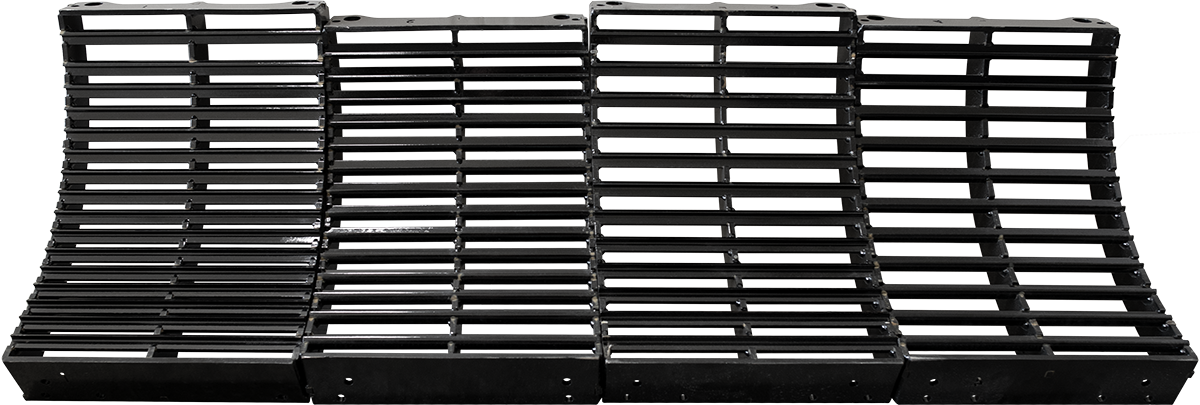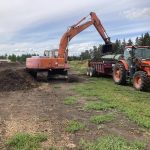The 919 moisture meter has been a common sight in prairie grain elevators for more than half a century. Anyone who has sold grain has likely had their product pass through the cup of the venerable 919.
Producers also buy the 919 to check grain moisture on the farm before loading the truck.
Although the meter has gone through upgrades, the latest model still looks much the same as the original. In fact, the company that recently took over the 919 said many parts of the original moisture meter are compatible with today’s units.
Read Also

VIDEO: Green Lightning and Nytro Ag win sustainability innovation award
Nytro Ag Corp and Green Lightning recieved an innovation award at Ag in Motion 2025 for the Green Lightning Nitrogen Machine, which converts atmospheric nitrogen into a plant-usable form.
Jason Diehl of Dimo’s Tool and Die in Winnipeg said the company considered converting to computerized technology two years ago when Dimo bought the Labtronics Halross 919 company, but found no advantage in chip technology.
“There was no accuracy benefit to be gained by converting to computer chip technology. If computerization would have made the 919 more accurate, we would have done it,” he said.
“The Canadian Grain Commission allows 0.2 percent in their regulations. The 919 meters, even the 55-year-old units with tubes, give a reading that is accurate to 0.1 percent. The basic technology we use in our 919 today is the same technology still in use by the grain commission since the early 1950s.”
Diehl said that in the early 1950s, the commission was faced with a decision about which moisture meter to incorporate into its system.
Although there were a number of models available at the time, the Winnipeg-built Halross 919 gave the most accurate and most consistent readings. Consequently, it got the nod.
All the 919 charts for the different crops in Western Canada have been developed and calibrated by the grain commission since that time. They are specific to 919 technology. As new crops are introduced, the commission calibrates and develops new 919 charts.
“When Dimo Tool and Die bought Labtronics, we wanted to make sure our technology remained compatible with the Canadian Grain Commission. They set the standard which the industry follows,” Diehl said.
“If we had started all over with a computerized version of the 919, we would have had to start from scratch to calibrate and develop all of our own charts. That means we would have lost our compatibility with the commission. There was nothing to be gained from digital conversion and plenty to be lost.
“For a 919 moisture tester, we see conversion to computer chip technology as nothing more than a money grab. It doesn’t make the 919 any better. We don’t like seeing farmers spending money they don’t have to, and that’s what happens if you take a reliable test instrument like this and convert to chips.”
Dimo’s Tool and Die had been manufacturing all the 919 for Labtronics for 25 years, so it was familiar with the old tube technology. Rather than make the jump from tubes to chips, the company opted for a smaller leap. All new 919 moisture testers are built with solid-state transistors.
Diehl said there was nothing wrong with the old tube system, but tubes burn out and don’t stand up well to the abuse of in-field operations.
The latest version of the 919 still features an analogue dial, but it also has an LED indicator that changes colour from green to red as the moisture meter needle approaches the low point on the moisture scale for a specific crop. This helps focus attention on the exact needle location when things are rushed or when there are distractions.
Another new option this year is a calibration test plug port on the side of the case to verify calibration at any reference point on the dial drum. The test plug is a combination of resistors and transistors that precisely mimic a certain moisture reading range. If the dial doesn’t match the information in the test plug, the operator knows his 919 needs to be recalibrated.
This test plug feature had been available briefly in the early 1970s and is being brought back now as producers become more concerned about the exact moisture reading on grain they load for shipment.
Diehl said even without the test plug, a producer should regularly check the accuracy of moisture meter readings by comparing numbers to the elevator and neighbours.
“If your readings start to vary by 0.3 percent or 0.4 percent compared to other meters in your area, then you should send it in for recalibration,” said Diehl.
“If you get into extreme situations, a meter that has been working fine for years might all of a sudden give wrong information. We saw that last year in Alberta where we had meters which had never had to deal with high moisture.
“Alberta had high moisture conditions and a lot of meters that had been fine for years all of a sudden had trouble up in the higher ranges like 70 or 80.”
The fee for a complete cleaning, servicing, checking solder joints and recalibration is $75.
“We have same day turnaround, year round. We like to have all the units sent in before harvest, but that doesn’t always happen. At harvest time, we typically get 15 to 30 testers showing up on a Monday morning.
“We get them all completed and shipped by Tuesday morning, even if it means working past midnight. We know that at harvest, the guys need their testers, so we make sure they get them back as soon as possible.”
How often should a farmer send in his 919 for service?
Don’t send it if you don’t have to, Diehl advises.
“If it’s accurate and it’s working properly, save your $75.”
Dimo Karamichelis, owner of Dimo’s Labtronics, said that with 30,000 or more 919 moisture testers sold in North America in the past 55 years, it’s hard to keep track of them all.
Added Diehl: “We do know we have some 30-year-old testers out there that have never been sent in for repair or recalibration and they’re still giving the exact same moisture reading as the 919 at their local elevator.
“When people ask me about upgrading their old testers to transistor or chips, I just tell them that I have thousands of tubes in stock and I sell them for five bucks each, so it’s really hard to justify spending any money on upgrades.”
The 2006 version sells for $975. It operates on 110 volts and is also available with a 12-volt adapter.

















